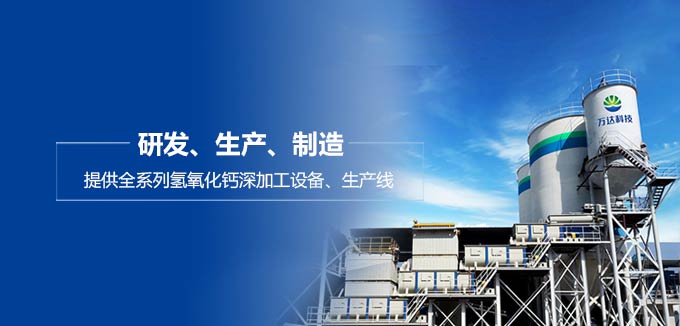Introduction to denitrification and ultra-low temperature denitrification systems
- Categories:Industry News
- Author:
- Origin:
- Time of issue:2022-12-09 14:12
- Views:
(Summary description)Introduction to denitrification and ultra-low temperature denitrification systems Denitration refers to the process of removing nitrogen oxides from combustion flue gas to prevent environmental pollution. Mainstream denitrification processes include: ultra-low temperature denitrification and SNCR.
Introduction to denitrification and ultra-low temperature denitrification systems
(Summary description)Introduction to denitrification and ultra-low temperature denitrification systems
Denitration refers to the process of removing nitrogen oxides from combustion flue gas to prevent environmental pollution. Mainstream denitrification processes include: ultra-low temperature denitrification and SNCR.
- Categories:Industry News
- Author:
- Origin:
- Time of issue:2022-12-09 14:12
- Views:
Introduction to denitrification and ultra-low temperature denitrification systems
Denitration refers to the process of removing nitrogen oxides from combustion flue gas to prevent environmental pollution
Mainstream denitrification process: Multiple mainstream processes are divided into ultra-low temperature denitrification and SNCR. Except for the lower reaction temperature of SCR compared to SNCR, there was no significant difference between these two processes. But from the perspective of construction and operation costs, the investment in SCR is at least several times that of SNCR, and even more than 10 times.

Introduction to Ultra Low Temperature Denitration Process: Ultra low temperature denitration is currently a mature flue gas denitration technology. It is a post furnace denitration method that was commercialized in Japan from the late 1960s to the 1970s. It uses reducing agents (NH3, urea) under the action of metal catalysts to selectively react with NOx to generate N2 and H2O instead of being oxidized by O2, hence the name "selectivity".
The popular thyristor processes in the world are mainly divided into ammonia thyristor and urea thyristor. These two methods utilize the reduction effect of ammonia on NOx, where NOx (mainly NO) is reduced to N2 and water under the action of a catalyst, with little impact on the atmosphere. The reducing agent is NH3.
The catalysts used in SCR mostly use TiO2 as the carrier, with V2O5, V2O5-WO3, or V2O5 moo3 as the active component, and are made into three types: cellular, flat, and corrugated.
The SCR catalysts used in flue gas denitrification can be divided into high-temperature catalysts (345 ℃~590 ℃), medium temperature catalysts (260 ℃~380 ℃), and low-temperature catalysts (80 ℃~300 ℃), with different suitable reaction temperatures for different catalysts.
If the reaction temperature is too low, it will reduce the activity of the catalyst, leading to a decrease in denitrification efficiency. If the catalyst continues to operate at low temperatures, it will cause permanent damage to the catalyst.
If the reaction temperature is too high, NH3 is prone to oxidation, and the production of NOx increases, which can also cause phase transition of catalyst materials and degradation of catalyst activity. Most SCR systems at home and abroad use high temperatures, with reaction temperatures ranging from 315 ℃ to 400 ℃. Selective non catalytic reduction is a method of reducing NOx without the use of a catalyst within the temperature range of 850~1100 ℃. The commonly used drugs are ammonia and urea. The catalytic cracking flue gas SCR denitrification technology uses DNX-FCC catalysts produced by ultra-low temperature denitrification companies. The flue gas discharged from the flue machine enters the waste heat boiler, and the flue gas is introduced to the SCR reactor for denitrification reaction at a temperature of 295-420 ℃. The principle is that under the action of a catalyst, NO or NO2 is reduced to ammonia by NH3.
Generally speaking, the SNCR denitrification efficiency of large coal-fired units can reach 25% to 40%, and that of small units can reach 80%. Due to the significant impact of boiler structure size on this method, low nitrogen combustion technology is often used as an auxiliary treatment method. This project has low cost, simple layout, and small footprint, making it suitable for the renovation of old factories. The new factory can be used according to the boiler design.
Scan the QR code to read on your phone
Related News
-
Mechanical fossil ash kiln manufacturer: energy-saving lime kiln technology and characteristics
Mechanical fossil ash kiln manufacturer: energy-saving lime kiln technology and characteristics. Energy saving lime kiln is a type of kiln used for calcining limestone to produce quicklime. It is a new type of equipment that uses natural gas or coal gas as raw materials and air as auxiliary gas to heat clinker to produce qualified lime - Introduction to Three Separation High Efficiency Vortex Powder Sorter Manufacturer 01-09
- Mechanical Fossil Ash Kiln Manufacturer: Characteristics of Energy Saving Lime Kilns 12-29
- The powder selection machine of the powder selection machine manufacturer produces lime powder in the finished sand after powder selection 12-29
- What are the working mechanisms of centrifugal powder concentrators introduced by the powder concentrator manufacturer 12-19
Related Products
Vanda Technology
TEL:+86-536-3390655 / 400-869-0655
EMAIL:wdhbkj@163.com / WhatsApp: 8613869629198
ADDRESS:No. 128, Liuheng Road, Chengguan Street, Linqu County, Shandong Province, China

Follow us
© 2022 Shandong Wanda Environmental Protection Technology Co., Ltd All rights Reserved 鲁ICP备16006007号-15 SEO Powered by: 300.cn weifang
© 2022 Shandong Wanda Environmental Protection Technology Co., Ltd
All rights Reserved / SEO
鲁ICP备16006007号-15 Powered by: 300.cn weifang




 13869629198
13869629198

 点击咨询
点击咨询 